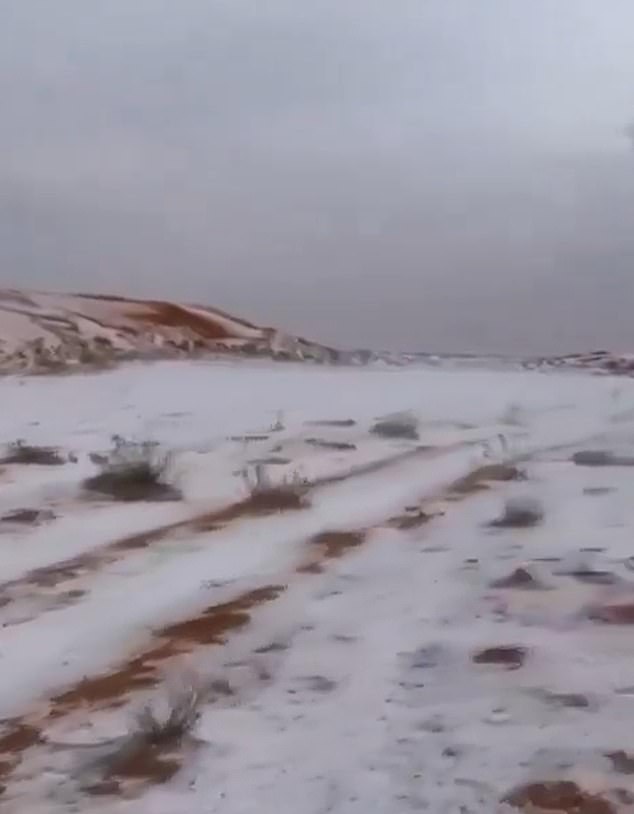The Al-Jawf region of Saudi Arabia has been transformed into a winter wonderland after a rare hail storm turned the desert white.
In a press release on Saturday, the Saudi regime’s press agency said: ‘Heavy rain accompanied by large amounts of hail has continued in several parts of the Al-Jawf region since last Wednesday, and the land has been watered and The valleys have flowed. which heralds an attractive spring season.
Images and videos have appeared on social media showing dreamlike landscapes, showing how drops of ice covered large areas of the sandy desert, almost giving the appearance of a snow-covered landscape.
Clips taken from inside a vehicle traveling on a road show how the terrain appears almost unrecognizable as it is covered in a layer of ice pellets the size of golf balls.
The Al-Jawf region of Saudi Arabia has been transformed into a winter wonderland after a rare hail storm turned the desert white.
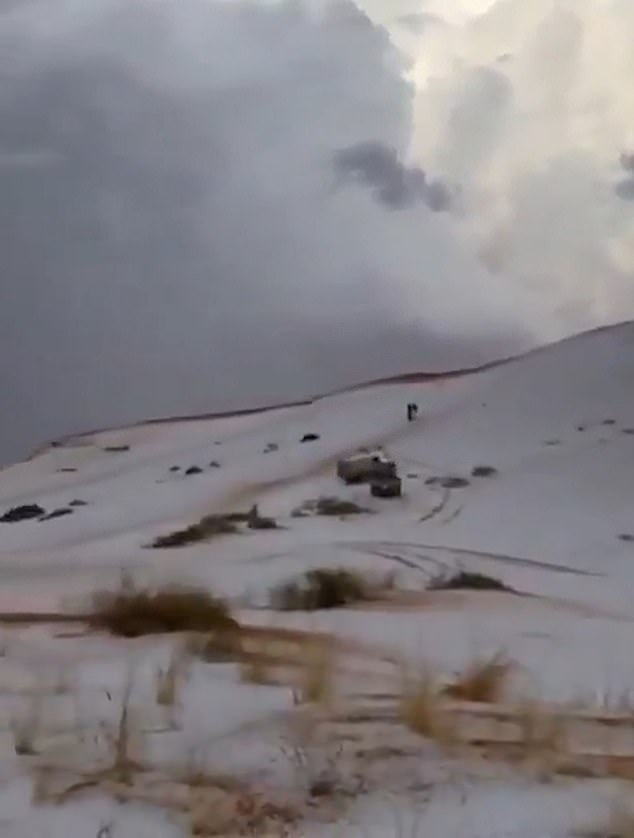
Images and videos show drops of ice, which almost look like snow, covering large areas of the sandy desert.
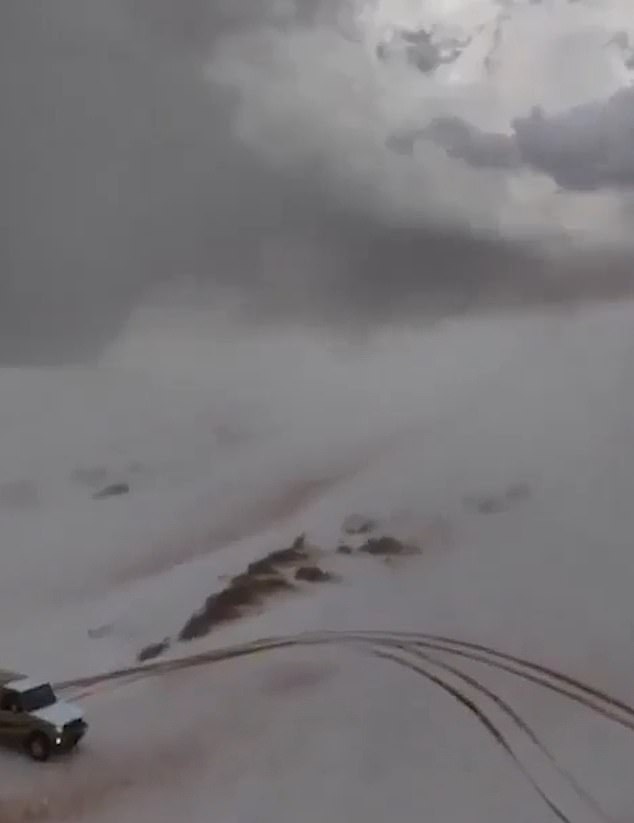
The UAE National Meteorological Center has attributed the latest hail storms to a low pressure system coming from the Arabian Sea.
He Saudi Arabia Meteorological Center has issued severe weather warnings for the next few days, predicting heavy rain, hail and strong winds, as well as reduced visibility.
Meanwhile, the UAE National Meteorological Center has attributed the latest hail storms to a low pressure system coming from the Arabian Sea.
As a result, thunderstorms and hail hit Saudi Arabia and the United Arab Emirates.
While extremely rare in a country where temperatures regularly exceed 40 degrees, Saudi Arabia has in the past experienced snow and hail during the winter months.
In 2021, temperatures in Saudi Arabia dropped to -2 C, causing a rare snowstorm in the country’s Aseer region, where mountains and deserts were covered in white, while camels were photographed surrounded by snow .
It was the first time in almost half a century that the temperature in the region fell below freezing.
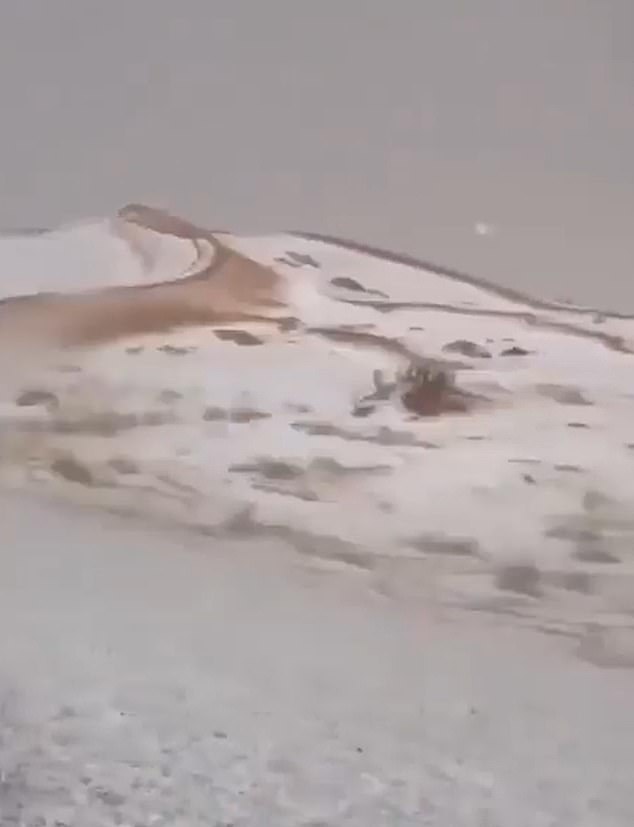
Saudi Arabia’s meteorological center has issued severe weather warnings for the coming days
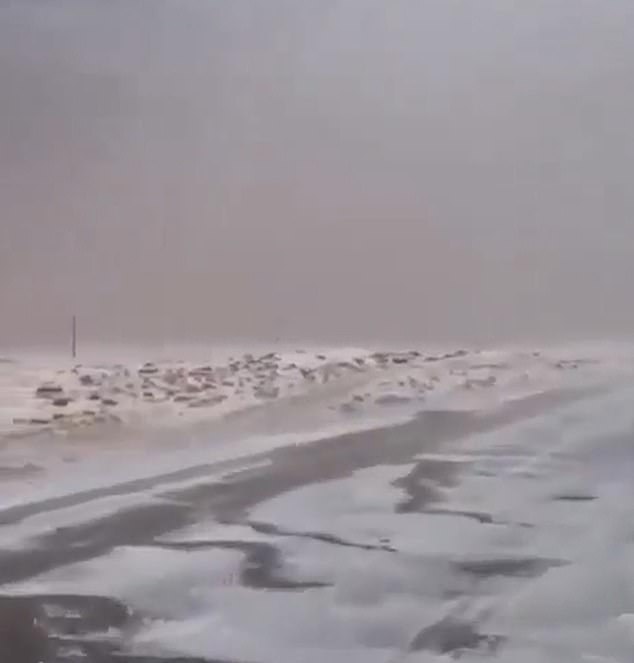
Snow and ice are unusual in desert regions
Although it may seem like a contradiction, while ice is now unusual in hot desert regions, it is not entirely unknown.
Temperatures in desert landscapes can drop dramatically overnight, but snowfall usually melts early the next day.
In 2022, the Sahara Desert was left with fascinating snow patterns on its sand dunes after temperatures fell below zero.
The Sahara Desert covers most of North Africa and has experienced changes in temperature and humidity over the past hundreds of thousands of years.
Although the Sahara is very dry today, it is expected to be green again in about 15,000 years.
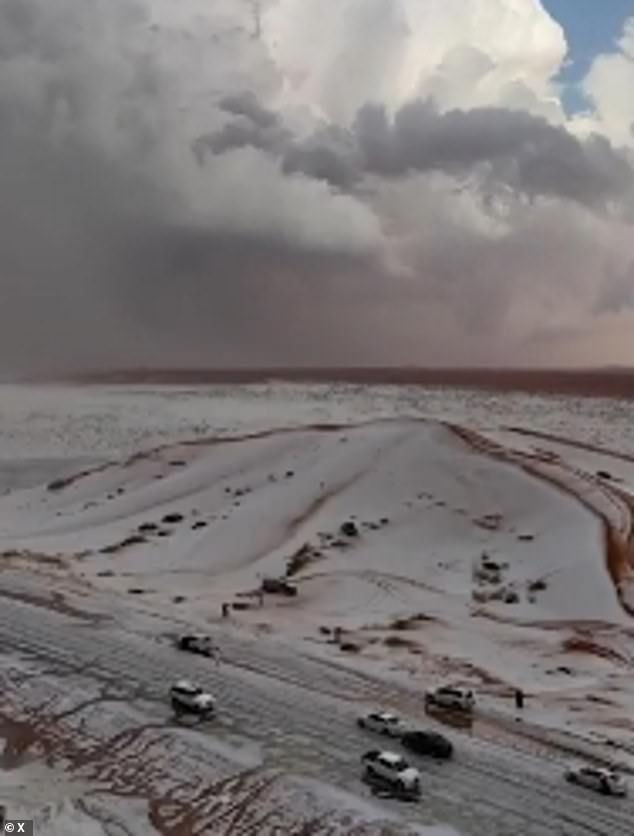
Temperatures in desert landscapes can drop dramatically overnight, but snowfall usually melts the next day.
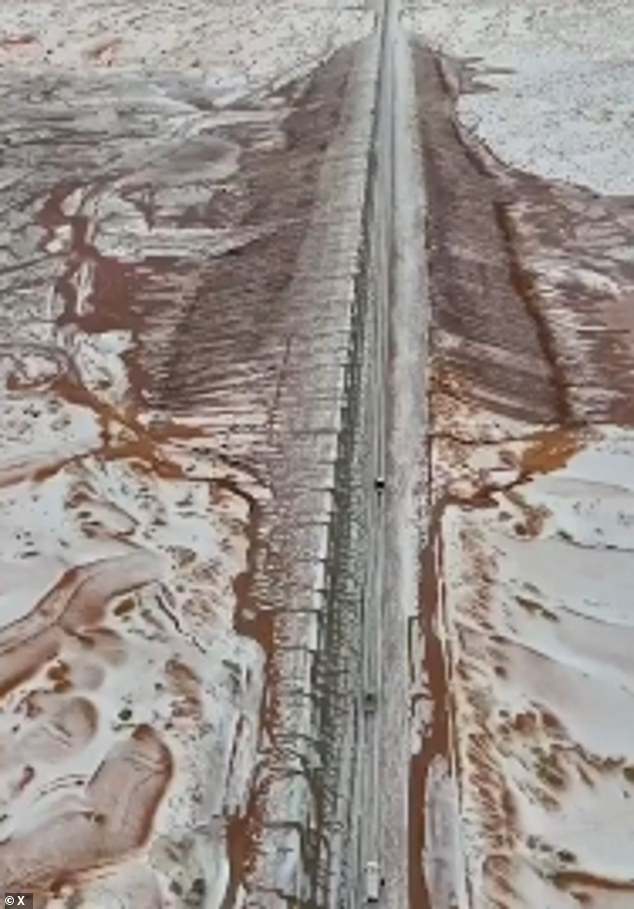
In a press release on Saturday, the Saudi regime’s press agency said: ‘Heavy rain accompanied by large amounts of hail has continued in several parts of the Al-Jawf region since last Wednesday.

